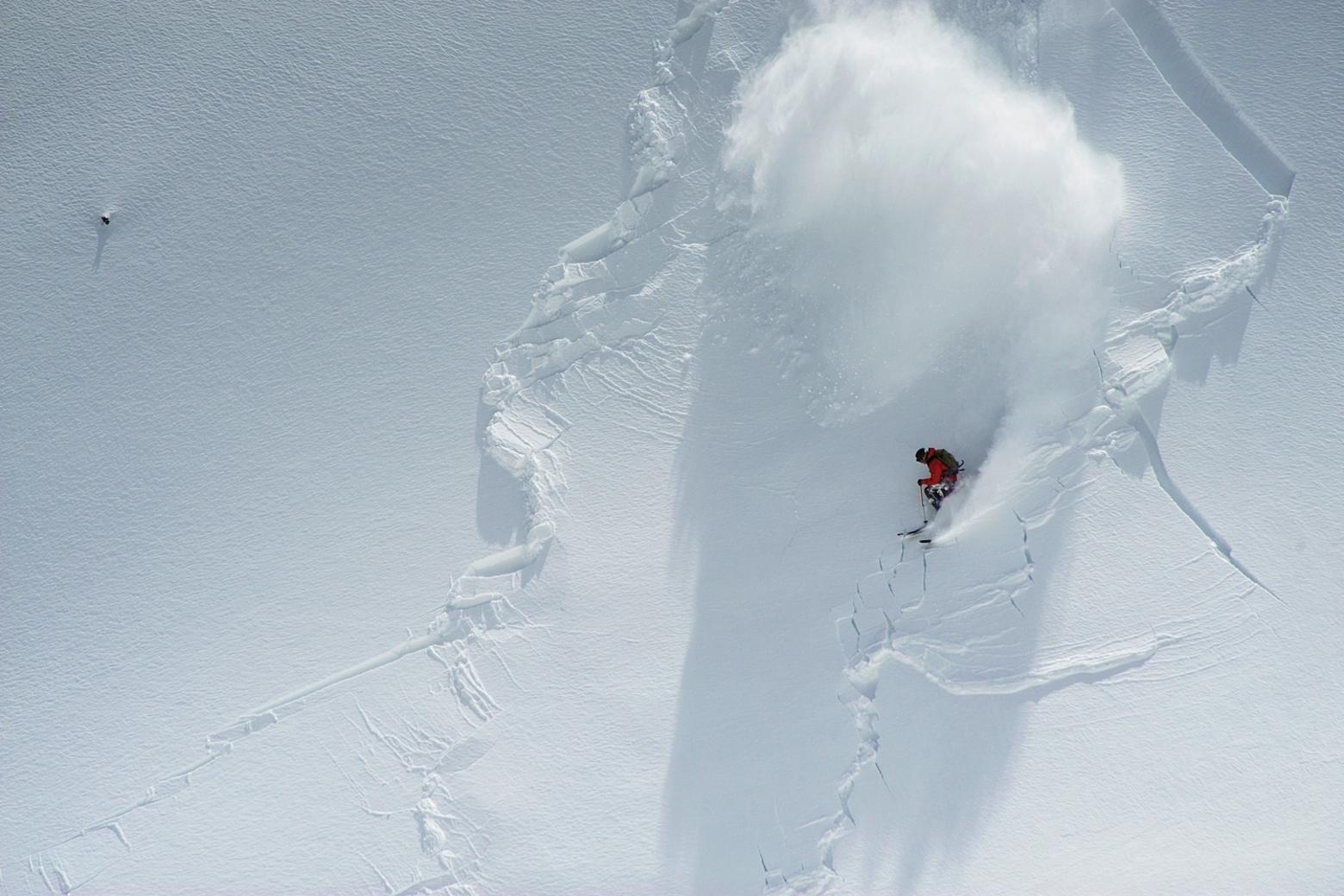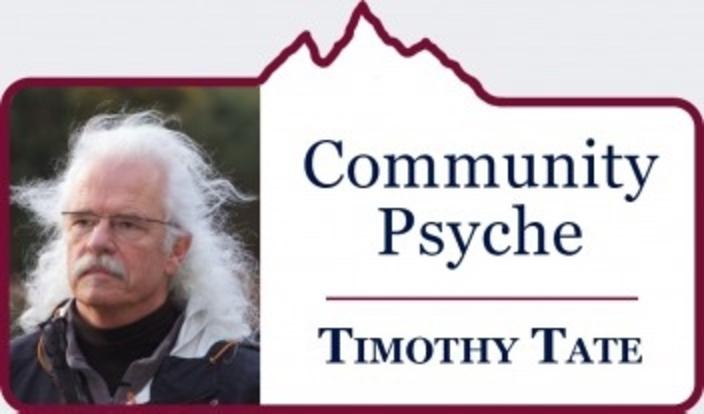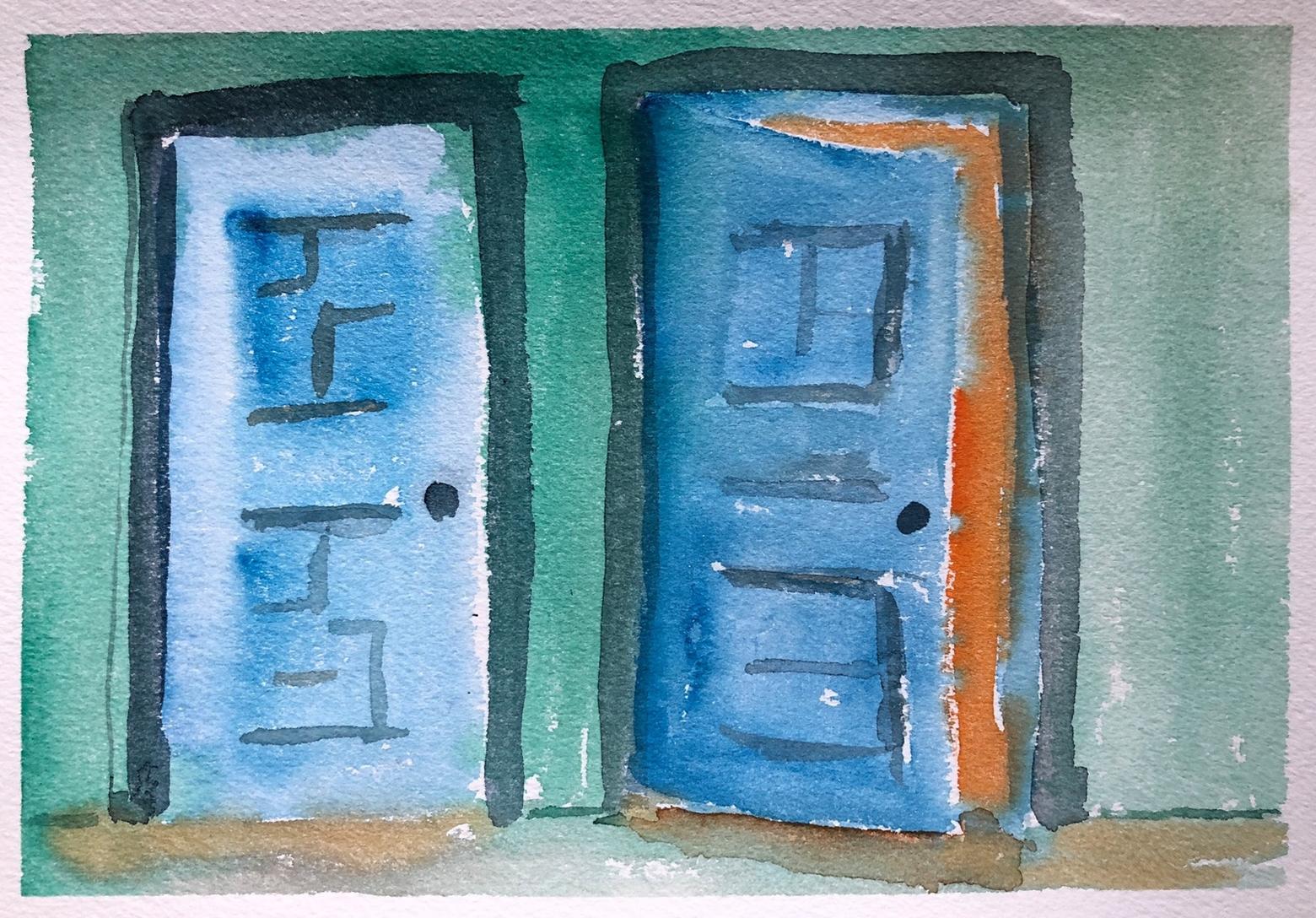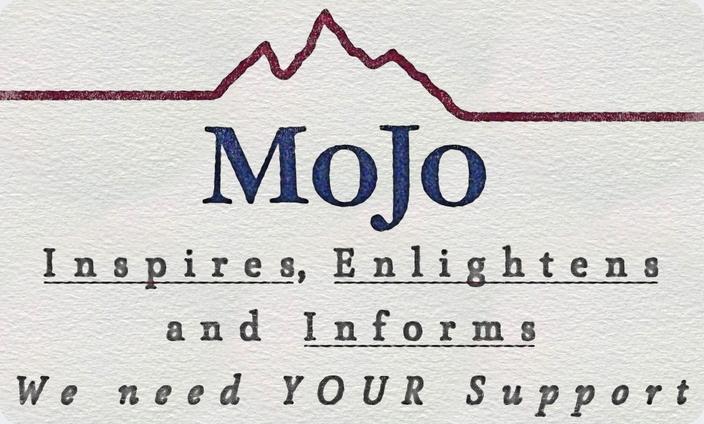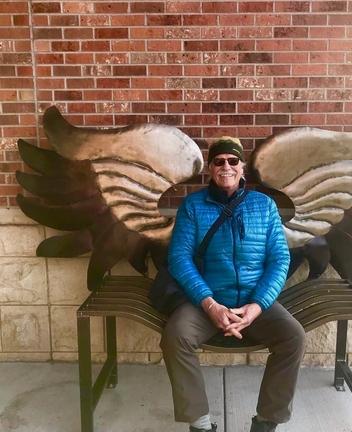Back to StoriesA Mountain Town Man Hits The Wall Of A Midlife Crisis
Walt was apprehensive, I could tell. He seemed anxious. He asked me what he should do, lay or stand? I suggested that he take a seat on the couch.
December 4, 2017
A Mountain Town Man Hits The Wall Of A Midlife CrisisIn Part 2 Of Timothy Tate's Series "When Peter Pan Enters Middle Age", Walt Seeks Help Behind The Blue Door
To read part one of Walt's journey click here.
“A sign that a person has not made the middle
passage is that he or she is still caught in ego-building activities of the
first adulthood. One has not yet learned that they only represent projections
onto finite and fallible icons.” —Dr. James Hollis
Walt was apprehensive, I could tell. He seemed anxious. He asked me what he should do, lay or stand? I suggested that he take a seat on the couch.
I got a good first read from the look in his eyes. He stared downward. He couldn’t lift his head to meet my
greeting. It is the first sign of shame.
There is a tipping point in our life cycle
where our efforts to achieve conventional acceptance and approval for the
person we present to the world—our identity—tips into more murky psychological
territory.
This tipping point may take shape gradually
across years or decades, over a series of events spawned by relationship
challenges, woundings by betrayal, injury, or employment frustration. Or it
might involve a sudden onset of trauma, like the unexpected loss of a loved one
or a tangle with law enforcement. Such events can tip us abruptly into a state
of mental confusion and cause a jarring “what-the-hell-am-I-doing-with-my-life-anyway”
moment.
Some call it an identity crisis, and in many
men it arrives somewhere in middle age.
I’ve been asked, “Why are you focused
on middle aged men in this series?”
It is true that people of all genders, race,
ethnicities, and social standing have existential midlife crises. What I’m tracking here is a category of such
soul searching that involves men, particularly those in mountain towns that
attract the young, physically-fit, outdoor-minded who never think or anticipate
the inevitable moment when their physical faculties start to faulter.
And this is the moment when they must return
to earth and deal with the consequences of what it means to be a mortal human
who knows life cannot be lived by chasing thrills alone.
Rather than midlife being a period when
limitations define us, I see it as a golden opportunity to discover a deeper
happiness than that delivered solely through high-adrenalin.
The Jungian analyst Murray Stein noted:
“Sometimes this takes the form of the famous ‘crisis,’ but often it is not
something quite so dramatic. I have come to think of it instead as a potential
second birth of adult identity.”
° ° °
Walt, whom I introduced in the first column,
strolled through the Blue Door of my
psychotherapy practice disturbed enough to seek counsel. The fact is he didn’t really want to be there,
at least the desire wasn’t something he would admit to his friends. He was
there, he likely told his buddies, because a lawyer suggested help in order to
avoid a harsher penalty for a DUI handed down from a judge.
The impetus, however, doesn’t matter. A man
seeking counsel is carrying out a courageous act. Often it means holding up his
life to a mirror and in the reflection he sees himself immersed in a much wider
world than he had imagined.
The masculine in early development has an
archetypal need to be “large and in charge”, and seeking help in midlife can
feel like a defeat. Yet there is a legacy of warriors, heroes, and businessmen
seeking advice from elders, mentors and, in recent times, therapists.
The difference here is that counseling is too
often seen as a mental health issue not an opportunity for personal
transformation, moving from a fixation on appearances and accomplishments to
engaging a more mysterious and invisible inner world.
But here, in the disaster that is modern
health care, people must contend with the bureaucratic machinations of
insurance plans. Unless people are in overt crisis, therapy is still viewed in
some corners of society as a liability.
Indeed, if Walt wants help covering the cost
of therapy through his health insurance, I am required to assess his condition
with a mental health diagnosis from the official Diagnostic and Statistical
Manual of Mental Disorders Vol.V. (It’s
no different from a diagnosis that a family practitioner or dentist must send
off to insurance providers).
However, this mental health manual, written by
a select team of professional psychologists and psychiatrists, has its own
shadowy past, diagnosing homosexuality as a mental disorder all the way through
its third version up to 1974. It has changed its focus over the years from a
proscriptive approach as to what is agreed upon as mental illness to a
descriptive approach that collects data on what mental health conditions are
reported.
There is a lingering stigma to counseling for
this very reason, i.e. “there must be something wrong with me if I go to
psychotherapy.” Does society have the same attitude toward physical exams,
prescriptions for healthy eating or advisements against smoking and drinking?
I view mental health more as a question of
determining what is right with us, as
in “maybe all that’s wrong with me is that I don’t trust myself or others.”
° ° °
Again, “Walt” is a composite of countless men
I’ve encountered in midlife. My practice is equally divided between men and
women. The athletes, community leaders, academics, and accomplished businessmen
that come in are smart enough to know that they’re in trouble. The moment of
crossing the threshold into my office and our first handshake feels ancient to
me, like two men meeting on a trail.
Guys—we’ve all been there.
Men size up one another in a primal way - sniffing out danger or greeting. My admiration for men, their vitality, vigor,
steadfastness, rationality, and willfulness is counterbalanced by my concerns
over their repressed emotions, lethargy, volatility, and overbearing
attitudes. Many of these things were learned and passed along psychically
during the formative years when dysfunction becomes imprinted based upon
generations of maladjusted behavior or undiagnosed chemical imbalances in the body that
flow through branches in family trees.
Walt is now sitting across from me maybe four
feet away, no desk, or coffee table between us. My first question is: “So, what
brings you into my practice?”
“Court ordered,” he responds.
Off to a fine start. I follow up with a more
open-ended question. “Tell me a story about yourself.”
This is met by, “What do you mean?”
“Well, how did you get into the pickle that
forced you to see me?”
“I was busted driving drunk after I failed to
yield the right-of-way.”
We then follow a line of questioning that
gives me a feel for whether or not counseling will be seen as a chore.
Will he say, “I’m fine. I just made a bad decision, am
willing to pay the consequences and move along”?
Or will this interlude be seen as a chance to
understand what caused the misjudgment.
This difference is the bellwether of not only
a man’s chance of benefitting from counsel but it also reflects what I mean by the
midlife tipping point.
Should Walt go the way of enduring counseling
only to satisfy some externally-imposed motivation he may go through
life like Murray Stein describes: “For these people aging is real only in a
physical sense but not psychologically, and even at the physical level it can
be staved off quite well given enough money…”
Does money really buy happiness? For some,
possibly. But people who have all the
money in the world are not necessarily capable of being introspective. Sometimes, the drive to make money, or excel
through feats of derring-do, or drinking, taking drugs, philandering or coping
with grave depths of depression are attempts to flee oneself rather than engage
with who we are—or want to be.
The point that Stein makes that is critical in
how one approaches one’s full life span is to conceptualize it in two parts. He
says the two halves of life are achievement of conventionality followed by
development of true individuality. Although this might seem like an
oversimplification, what strikes me is how the enduring question of identity is
the key to understanding middle age.
As spelled out in my first column, Walt
identified with establishing his identity in the conventionality of a mountain
culture where “big dogs”, i.e. the gods of outdoor recreation are defined by
their ability to succeed at challenging “gravity sports” such as skiing,
mountain biking, whitewater paddling, or the “anti-gravity” sportsmen of the alpine
climbing terrain.
I offer special thanks here to Mark Twight in
naming this distinction. He suggests that the challenge “to break free of an
identity created by an activity” is different for these two groupings.
This is a significant distinction in that the
precipitous challenges of mountaineering, reaching for the summit, and the
vulnerability of such exposure might temper a man differently than the rush of
gravity’s pull. Either way, a man comes to his senses and realizes that at some
point in his life he must face his individuality and stop hiding behind a
conventionally-determined identity.
° ° °
But there is a third possibility, albeit one
of a dark, unlit cul-de- sac in the psyche marked by a Personality Disorder
diagnosis. This incorrigible disturbance is well known for taking form as
Narcissism in men and as Borderline Personality in women. Should Walt become
lost in this unforgiving region of the mind, it is best to light a candle and
say a prayer for all the good that counsel will do.
However, being a man for Walt meant proving
himself against thrilling if not dangerous odds.
The landscape of our mountain culture
amplifies this risk taking. There is a call to adventure that mountains
stimulate. I know it. The mountains are what drew me here. I know, after
spending 35 years in the mountains, that when I am in an environment where my view
is blocked or my horizon line is obscured by dense deciduous trees like in the
Midwest or South, I become agitated and claustrophobic.
We mountain folk need a whole lot of room to
roam. I believe the environment not only
draws people of a certain psychic framework but creates a psychic framework,
which validates tendencies that are healthy and others that are not.
The call of the wild, be it the form of
rushing water, hidden crags, unexplored ice walls, or untracked powder is
relentless. And the more gnarly the weather, terrain, or line the better. There
is no question that a man’s identity is defined in part by his ability to go
farther and higher, to be faster and more skilled, than the other guy.
Again, I am not suggesting there isn’t a
similar or identical instinctual urge in women, but women also play other roles
that men often do not—which has a moderating effect on self-impulse—and
that is being the foundation of families. I am not suggesting that “a woman’s
place is in the home” but that a man will never understand what it means to
carry forth another human life form in one’s body and the sense of
responsibility to provide grounding that comes with it over the course of life.
° ° °
The question with the Walts of the world is how
to convey that the challenges of the inner world, in midlife and beyond, are as
exciting and as demanding as are the mountains and rivers.
The way I navigate this task is to hear how a
man describes his interests and values. Walt conveys that he likes to
impress women, thrives on the stimulation of outdoor adventures, and wants to
be seen as strong.
We play with the notion that how his need to
impress women might, or might not, convert into how to relate to her. We revel
together in the adrenaline rush of jumping off the ridge line on Slushman’s run
at Bridger Bowl, and wrestle with his mania for stimulation that, at times, has
led to feelings of gut-choking depression. We admire his physical strength
while wondering about how the courage to handcraft a fresh inventive and
imaginative life is an equally strong move.
We wonder aloud how the need to be in control
of everything to manage his anxiety might be the very source of his anxiety. We
have deep, intense mano a mano rhetorical exchanges building trust based on the
fact we probably were drawn to this mountain town for many of the same reasons.
What it comes down to, for me as a man and a
therapist, is that my inner longing for adulation and success in whatever field
of endeavor I choose is a force that has two basic settings: outer and inner.
The first part of my life is to prove my value and worth in our competitive
world. The tipping point that comes gradually or suddenly heretofore called
“mid-life crisis” is my opportunity to reinvent my perception of the masculine.
Either
I engage in this awakening of the inner life or I become increasingly desperate
to cling onto an external identity which looks like a worn out shoe. And there
is no pretending. Just ask my wife or daughter or son. They will tell you if
you are real or not. All a man has to do is ask.
Next in Part 3: Walt Confronts His Existential Moment Of
Truth

